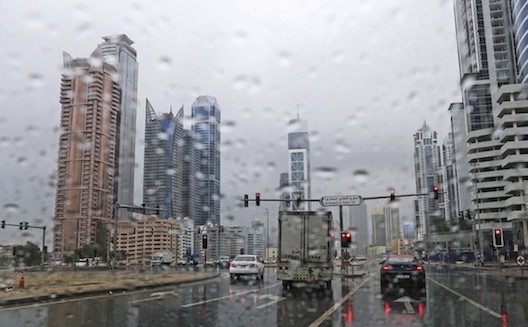MENA’s forecasting situation


The power of the wind, important for MENA. (Image via
Utilities-me.com)
The MENA region population growth has been explosive.
According to EY, a 1.9 percent annual growth rate now means there is a total of 321 million people living in MENA, and this comes with a skyrocketing need for energy consumption.
Given this huge population growth, investment in cleantech infrastructure is essential to keep up with the demand. Latest projections say that over the next 35 years energy intensive industries such as petrochemicals, aluminum and steel production are expecting an 81 percent increase.
The MENA region can become one of the fastest growing markets for cleantech as it has the natural resources for excellent solar, wind and water resources that would place the region as a cleantech hub.

Indeed, it does rain in the Middle East. (Image via The
National)
Governments have been active lately with facilitating laws and investment opportunities for the private sector to participate in growing the sector. Dubai, for example, launched a 500 million Emirati dirham research fund for clean energy and another 100 million dirham Dubai Green Fund for clean energy investments, all with the goal of having 25 percent of Dubai’s energy in 2030 being clean energy.
All this is great but then the question remains - how can we optimize this infrastructure? How can we make it better given that the supply and demand aren’t predictable?
For the demand side, a lot of research and solutions have been developed to increase the accuracy of predicting the demand, by utilizing historical data, seasonality and computer aided models. Like Predix, these basically simulate a certain situation and accordingly could project future characteristics.
Now, given the increase in renewable energy power plants there is an issue with supply. The variable nature of energy generation makes it harder to predict how much output will be generated - this is because we have to take into account the constant weather change, from temperature, cloud movement, pressure and more.
In turn, the utilization of big data to predict weather patterns makes it more efficient for energy companies to generate enough power during peak demand and less during slower demand times.
The solutions available
Recently GE introduced to MENA one solution for this, their Predix industrial platform. It captures and analyzes the unique volume, velocity, and variety of machine data generated across the industrial world.
This solution requires the integration of IoT such as temperature and pressure sensors into the network of data collection that feeds into something like Predix.
IBM has a weather modeling solution called Hybrid Renewable Energy Forecasting, or HyRef. This integrates IoT like cameras tracking cloud movement, sensors monitoring wind velocity and temperature, feeding it all to a weather modeling algorithm and cloud imaging technology.
This data is then analyzed, enabling wind farms to forecast their local weather for one month in advance with 15-minutes increment.
The benefits of prediction
Better weather prediction data helps determine how best to utilize solar, wind, and water power sources.
In a country as large as Egypt, with 90 million consumers, it can make a big difference for electricity outages.
Backups are needed. When a renewable power station is unable to cope with a sudden weather change it is a diesel generator that steps in. Now, the predictive solutions that we are talking about here could minimize the size of the diesel engines and accordingly the investment in such assets.

Jordan through a weather map. (Image via Weather
Underground)
ArabiaWeather.com, a unique startup from MENA, has emerged in this area.
With its unique weather prediction algorithm, own weather stations in Jordan, licensed data from stations in Saudi Arabia, and access to regional satellite data, they have the capability to offer weather prediction for each square kilometer, something that CEO Mohamed Al-Shaker has spoken about with Wamda before.
So, better forecasts can affect everything from smart dishwashers, water heaters, water treatment plants, and electric-car chargers, not only to accommodate shifts in the solar intensity but to ride out inevitable weeks of cloudy weather without resorting to fossil fuels.
It also makes newly introduced hybrid models using wind and solar generation in the same power plant more efficient. For instance wind is more powerful at night so the wind turbines could generate more energy and solar is available in the morning.
For our region the intersection between weather forecasting technology and renewable energy generation creates tons of opportunities for startups. And one example in this area includes leveraging Predix cloud operating by creating apps to go with it for investors and governments to best locate where to build a solar or wind power plant.


